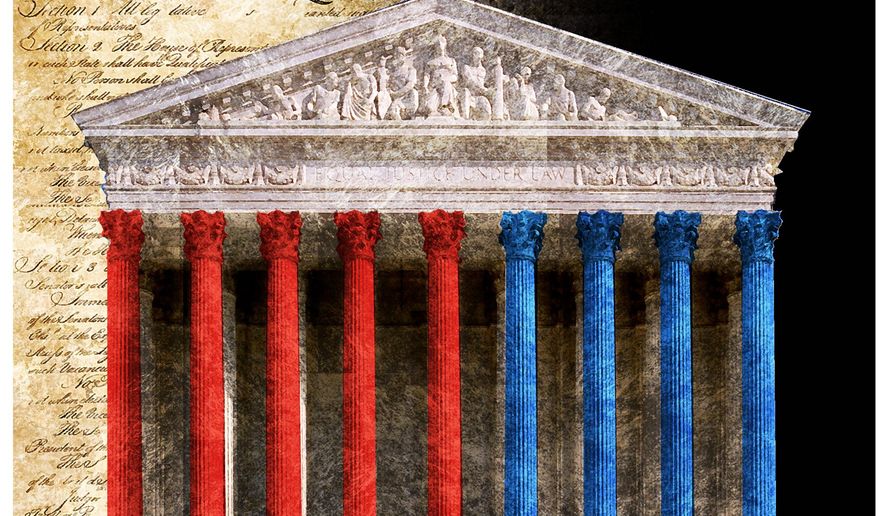OPINION:
The new and improved Supreme Court finally premiered last week. It was worth the wait.
In a case originating in New York (where else?), the court got off the sidelines and asserted the primacy of the First Amendment in the face of the widespread curtailment of rights under the catch-all excuse of “fighting the coronavirus.”
As last Wednesday night was turning into Thanksgiving Day, the Supreme Court issued a temporary injunction of a New York state order barring more than 10 or 25 worshippers (depending on whether the church, mosque, or temple was in a “red” or “orange” area) from attending in-person religious services.
The vote, which should have been 9-0, was uncomfortably close at 5-4, but at least it was a decisive result. The justices have been deadlocked on 4-4 votes on similar petitions almost since the beginning of the pandemic.
The difference: Justice Amy Coney Barrett is now on the job, and that gives constitutionalists a working 5-4 majority. This is the first example of a case in which her presence strands Chief Justice John Roberts — appointed by President George W. Bush — in the minority. He will now be unable to divert or subvert the will of the constitutionalists on the high court.
The concurrences and dissents were telling. Justice Neil Gorsuch was as clear as day, starting his concurrence by declaring: “Government is not free to disregard the First Amendment in times of crisis.”
It got better.
“It turns out,” Justice Gorsuch wrote, “that the businesses [New York Gov. Andrew Cuomo] considers essential include hardware stores, acupuncturists, and liquor stores. Bicycle repair shops, certain signage companies, accountants, lawyers and insurance agents are all essential, too.”
“So, at least according to the governor, it may be unsafe to go to church, but it is always fine to pick up another bottle of wine, shop for a new bike, or spend the afternoon exploring your distal points and meridians. Who knew public health would so perfectly align with secular convenience?”
The court’s minority, led by Chief Justice Roberts, did their best to sidestep the question by pointing out that there was no need for the court to rule because Mr. Cuomo had already changed his mind. But — to paraphrase — failing that, the minority held, the coronavirus is really bad, so the rights of the people can be compromised to fight it.
The injunction is a clear and welcome indication that Justice Barrett’s presence portends a court driven by a single, central question – what does the Constitution allow or prevent? Not what prevailing fashion prefers, not what precedent recommends, and not what personal opinion promotes, but rather what rights and limits are ordained and established by the Constitution.
Chief Justice Roberts will no longer be able to hide behind the three justices – Stephen Breyer, Sonia Sotomayor and Elena Kagan – who are not committed to any particular thing, except the perpetuation of the leftist tilt of the government.
This decision places the court squarely, finally, happily, in favor of the Constitution the justices have all sworn to uphold, the rights it guarantees to the people, and the limits it imposes on government, rather than on the side of the temporary, arbitrary and grasping rulers.
It’s great to have them in the fight.
• Michael McKenna, a columnist for The Washington Times, is the president of MWR Strategies. He was most recently a deputy assistant to the president and deputy director of the Office of Legislative Affairs at the White House.




Please read our comment policy before commenting.